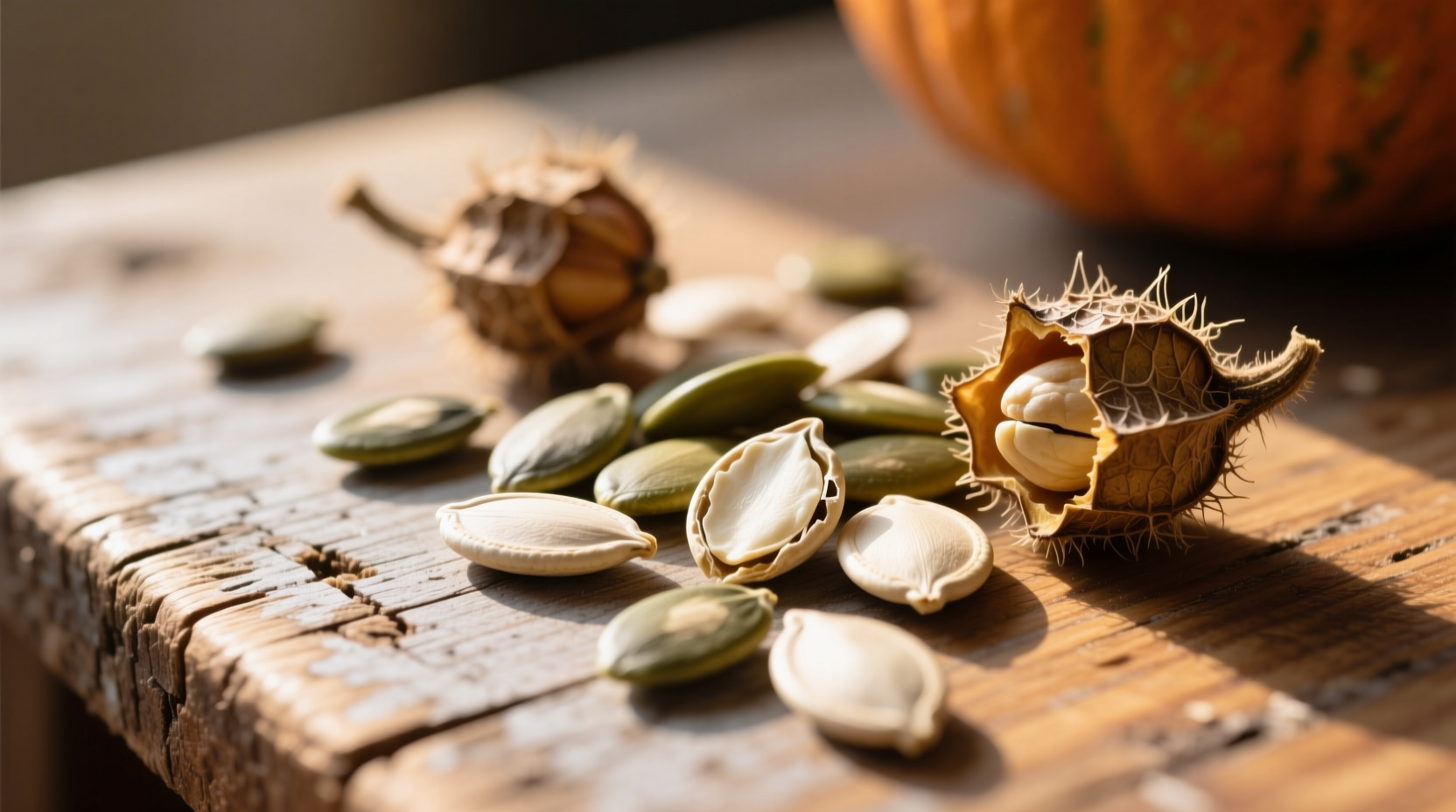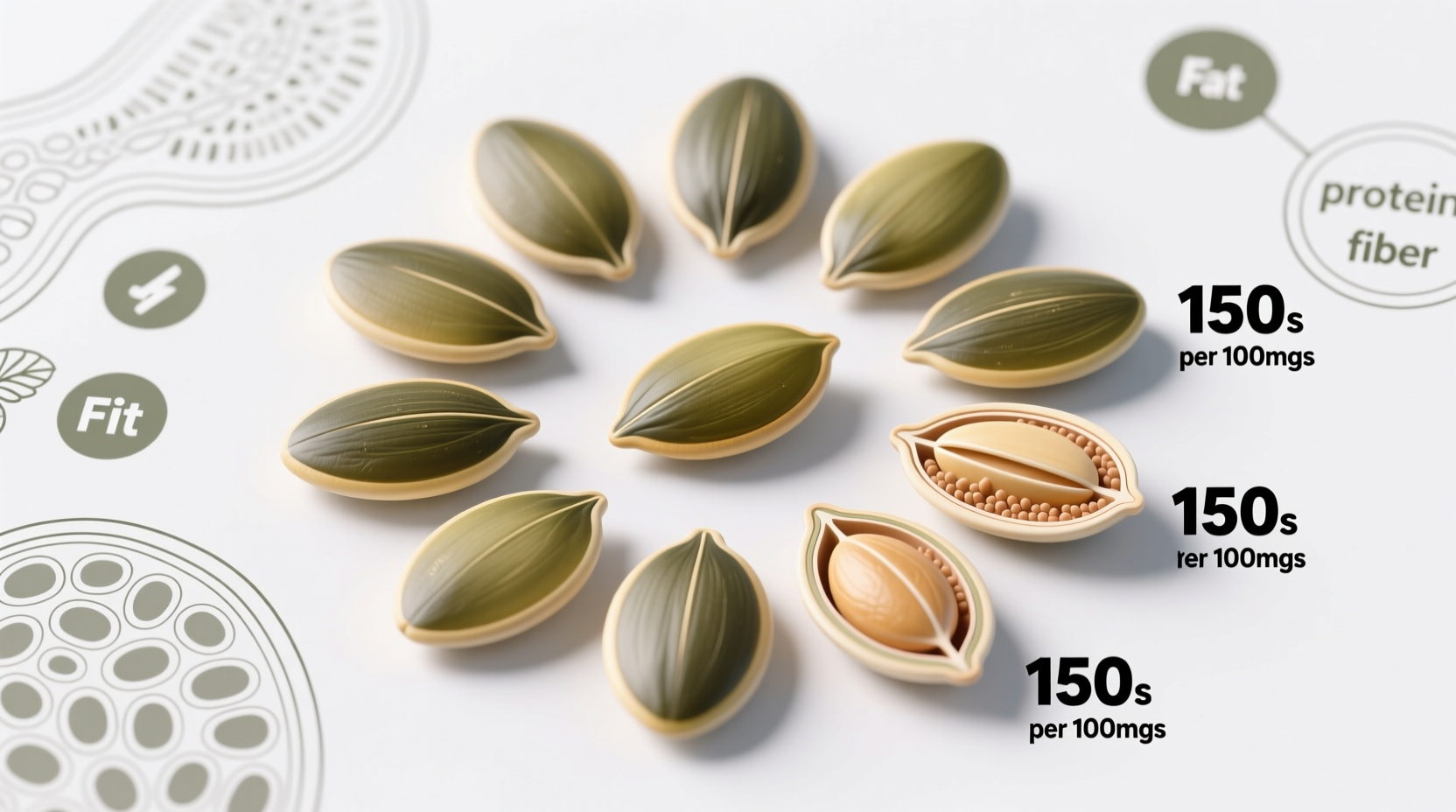Understanding Pumpkin Seed Nutrition: More Than Just Calories
When you're tracking your daily nutrition, knowing exactly what you're consuming matters. Pumpkin seeds, also called pepitas, deliver impressive nutritional value within their calorie count. Let's explore what makes these small seeds a powerhouse addition to your diet.
Breaking Down the Calorie Content
The calorie count in pumpkin seeds varies slightly based on preparation method. Understanding these differences helps you make informed dietary choices:
| Preparation Method | Portion Size | Calories | Protein (g) | Fat (g) |
|---|---|---|---|---|
| Raw | 1 ounce (28g) | 151 | 7 | 13 |
| Dry Roasted | 1 ounce (28g) | 158 | 8.5 | 13.9 |
| Roasted with Salt | 1 ounce (28g) | 158 | 8.5 | 13.9 |
| Oil Roasted | 1 ounce (28g) | 163 | 8.5 | 14.2 |
This nutritional comparison comes from the USDA FoodData Central database, the most reliable source for standardized food composition information (fdc.nal.usda.gov). Notice that roasting methods slightly increase calorie content due to moisture loss, not added ingredients.
Why Pumpkin Seeds Offer Exceptional Nutritional Value
What makes pumpkin seeds worth their calorie count? The answer lies in their remarkable nutrient density. Unlike empty-calorie snacks, pumpkin seeds deliver substantial nutritional benefits:
- Rich in magnesium - One ounce provides 18% of your daily magnesium needs, crucial for muscle function and energy production
- Excellent zinc source - Contains 23% of your daily zinc requirement, supporting immune function
- Plant-based protein - With 7-8.5g per serving, they're a valuable protein source for vegetarians
- Healthy fats - Primarily monounsaturated and polyunsaturated fats that support heart health
According to research published in the Journal of Food Science and Technology, pumpkin seeds contain phytosterols that may help maintain healthy cholesterol levels. This makes them a smart choice when considering calories versus health benefits.

How Preparation Affects Nutritional Value
Your preparation method impacts both calorie density and nutrient availability:
Dry Roasting vs. Raw Consumption
Dry roasting pumpkin seeds concentrates their nutrients by removing moisture, which explains the slight calorie increase per ounce. However, this process doesn't add fat or sodium. The Academy of Nutrition and Dietetics notes that dry roasting can actually improve the bioavailability of certain nutrients while preserving most vitamins and minerals.
Oil Roasting Considerations
When pumpkin seeds are roasted in oil, the calorie count increases slightly more (about 5 additional calories per ounce) due to absorbed oil. Choose heart-healthy oils like avocado or olive oil if you're preparing them at home to maintain the nutritional profile.
Pumpkin Seeds Compared to Other Popular Seeds
Understanding how pumpkin seeds stack up against alternatives helps you make informed choices for your dietary goals:
- Pumpkin seeds vs sunflower seeds: Pumpkin seeds contain more magnesium and iron, while sunflower seeds have slightly more vitamin E
- Pumpkin seeds vs chia seeds: Chia seeds have more fiber and omega-3s, but pumpkin seeds offer more zinc and magnesium
- Pumpkin seeds vs flax seeds: Flax seeds contain more omega-3 fatty acids, but pumpkin seeds provide more protein per serving
For those monitoring calorie intake, pumpkin seeds fall in the middle range compared to other seeds. Hemp seeds contain about 166 calories per ounce, while sesame seeds have approximately 160 calories.
Practical Ways to Enjoy Pumpkin Seeds Within Your Calorie Goals
Incorporating pumpkin seeds into your diet doesn't mean compromising your nutritional targets. Try these portion-controlled approaches:
- Add 1 ounce (about 1/4 cup) to morning yogurt or oatmeal for sustained energy
- Include in homemade trail mix with dried fruit (limit to 1/4 cup total)
- Use as a crunchy salad topping instead of croutons
- Blend into smoothies for added protein without significantly increasing calories
- Create a savory spice blend by combining with nutritional yeast for popcorn topping
Dietitians recommend measuring portions rather than eating directly from the bag, as it's easy to unintentionally consume multiple servings. One ounce of pumpkin seeds fills about 1/4 cup - a perfect snack size that delivers substantial nutrition within reasonable calorie parameters.
Addressing Common Misconceptions About Seed Calories
Many people avoid nuts and seeds due to their calorie density, but research tells a different story. Studies published in the American Journal of Clinical Nutrition show that whole seeds like pumpkin seeds may provide fewer metabolizable calories than laboratory analysis suggests, due to incomplete fat absorption.
The fiber and protein content in pumpkin seeds also promotes satiety, helping control overall calorie intake throughout the day. This makes them a valuable component of balanced eating patterns rather than something to avoid when managing weight.
How Much Should You Eat Daily?
For most adults, 1-2 ounce servings of pumpkin seeds 3-4 times weekly provides optimal benefits without excessive calorie intake. Those using seeds as a primary protein source might increase to 2 ounces daily, while those strictly monitoring calories may limit to 1 ounce portions.
Registered dietitians emphasize that the quality of calories matters more than the quantity alone. The nutrient profile of pumpkin seeds makes them worth including in your regular diet, even when tracking calories closely.
Final Thoughts on Pumpkin Seed Nutrition
Pumpkin seeds deliver exceptional nutritional value within their calorie count. Understanding the precise numbers - 151 calories per ounce for raw seeds, 158 for roasted - helps you incorporate them strategically into your eating pattern. Their rich mineral content, healthy fats, and plant-based protein make them a worthwhile addition to any balanced diet.











 浙公网安备
33010002000092号
浙公网安备
33010002000092号 浙B2-20120091-4
浙B2-20120091-4